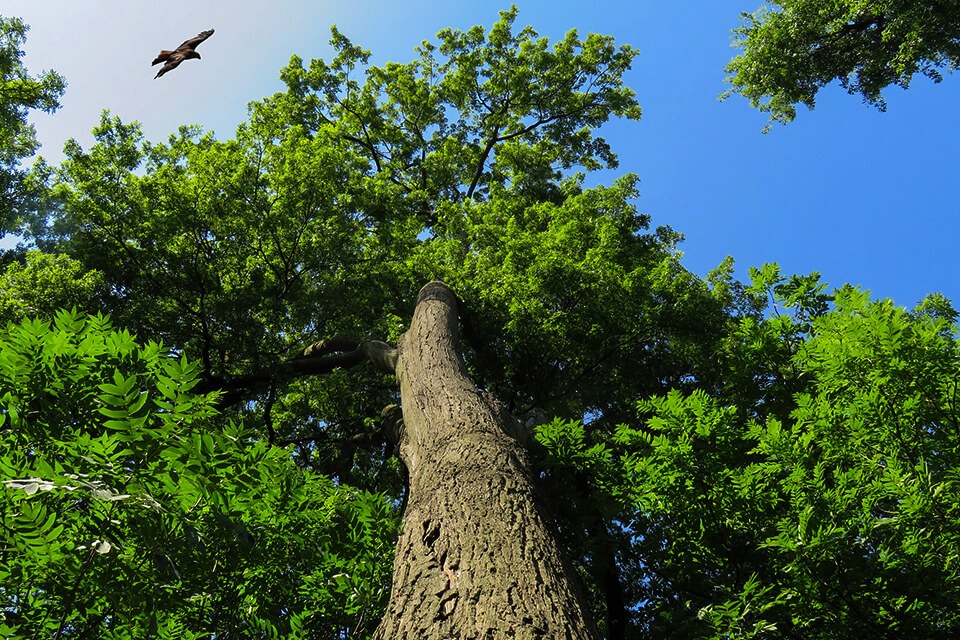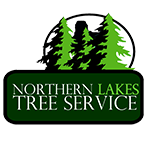Understanding Tree Topping and Crown Reduction
Myth of Tree Topping
The vast myth of tree topping includes several advantages, such as: a topped tree is easier to maintain; it reduces storm damage; it invigorates a tree; and it increases the value of a landscape. Unfortunately, there is a disturbing truth behind this myth.

Tree topping is perhaps considered the most harmful tree pruning practice. It is the indiscriminate practice of removing whole tops of trees or large branches or trunks from the tops of trees, leaving stubs or lateral branches that are not large enough to assume the terminal role. Other common terms for this practice include hat-racking, heading, rounding over, and tipping.
-
Tree-topping aftermath
Many homeowners are unaware that topping is used only when removing an unwanted tree. It is not recommended to be practiced as a primary pruning activity for reducing the height or spread of a tree. When a tree is topped, several things happen:
- It leaves large wounds in the trees. These wounds can become entry points for pathogens and may end up developing extensive decay. The decaying organisms that stay around the exposed wound tissues will eventually earn their freedom to go straight through the connecting branches of the trees.
- It undermines the long-term health and physical stability of the trees. Due to the decay at the wound site, the branches of the trees will then start to weaken, increasing the probability of them falling.
- It depreciates the value of the landscape. Deciding to top a tree is like choosing to destroy a tree’s natural limb structure. Aesthetic appeal will definitely be compromised by this practice.
- A state of rapid growth into the topped tree will occur. The tree will produce new growth at a remarkable rate. This time, the tree crown will be thicker and denser and will reach its old height in a faster manner.
- It leaves large wounds in the trees. These wounds can become entry points for pathogens and may end up developing extensive decay. The decaying organisms that stay around the exposed wound tissues will eventually earn their freedom to go straight through the connecting branches of the trees.

Previously topped trees require immediate attention by a qualified arborist due to the significant hazards that they can present. Certified arborists and other legitimate professionals can recommend techniques designed to diminish the harm and damage that topped trees may provide.
The Ultimate Alternative: Tree Crown Reduction
To avoid the occurrence of tree topping aftermaths, a special technique called “Tree Crown Reduction” is highly recommended. Crown reduction is the process of removing branch tips and pruning back to a growth point further down the branch. Its objective is to make cuts that leave the foliage intact on the outer edge of the new, smaller canopy. This practice is most often used when a tree has grown too large for its allocated space.
Crown reduction is also known as “drop-crotch pruning”. The technique is more preferred to topping as it results in a more aesthetically acceptable appearance and minimizes decay development (as this practice promotes proper and fast healing). It can also be considered when the root system of a large maturing tree has substantial decay, making it potentially hazardous, or on a tree with a high rating.
Needless to say, crown reduction wipes away the stress on the trees. This will take us to a safe and sound community. Crown reduction and other tree maintenance practices, such as tree pruning and shaping, tree trimming, stump grinding, tree removal, tree thinning, and tree disease control, should be specified by a trained and certified arborist. Contact Northern Lakes Tree Service for high-quality and professional tree care maintenance services today!
For free estimates:
NORTHERN LAKES TREE SERVICES
Damon Bretthauer
1-877-905-TREE or (208) 443-3600
https://northernlakestreeservice.com/
Locations:
- North Idaho: Priest Lake, Priest River, Oldtown, Sandpoint, Ponderay, Bonners Ferry, Cocalalla, Diamond Lake, Sacheen Lake, Rathdrum, Spirit Lake, Twin Lakes, Couer d’Alene, and the Hayden Lake area
- Eastern Washington: Newport, Deer Park, Elk, Spokane County, and Spokane Area
- Northern Lakes Area
